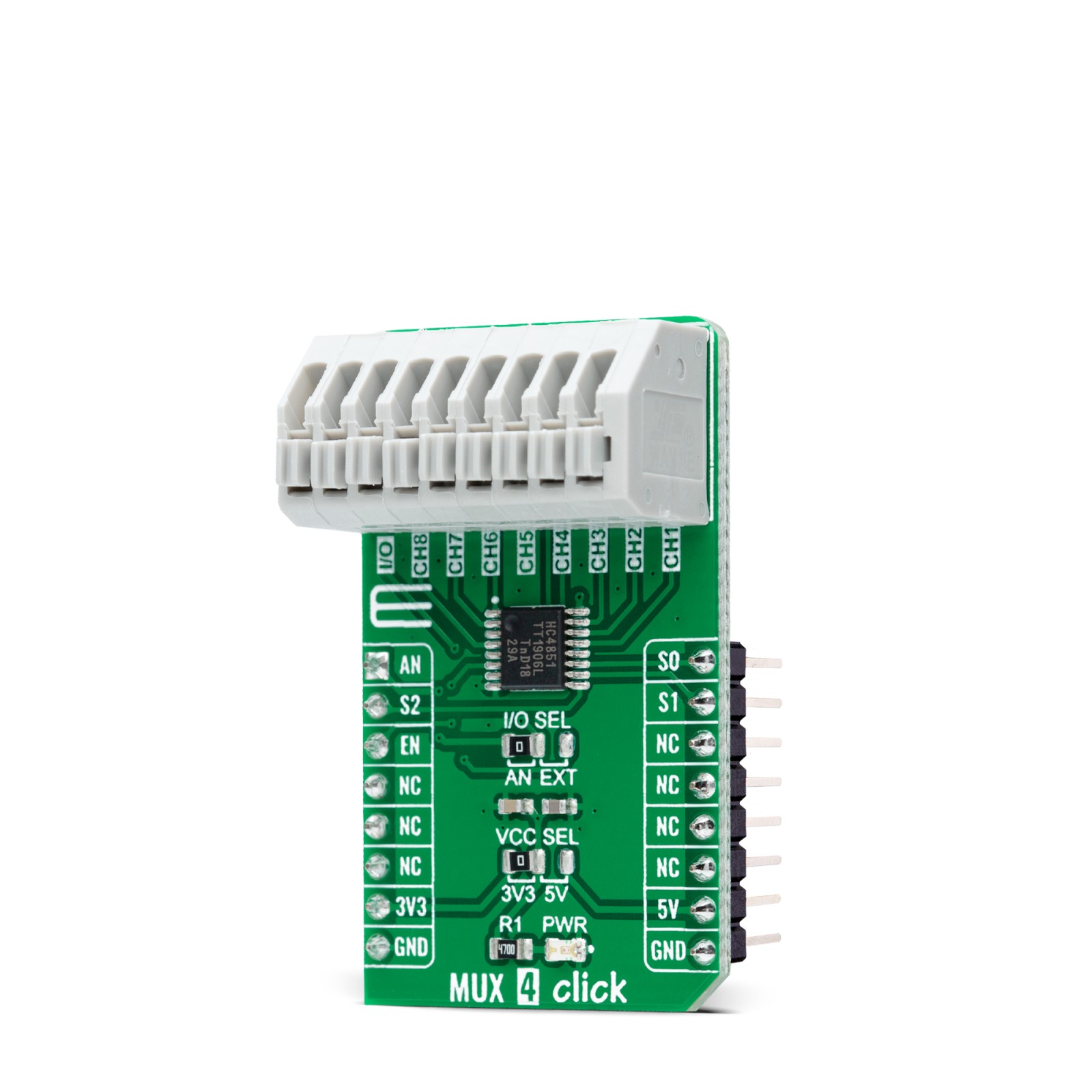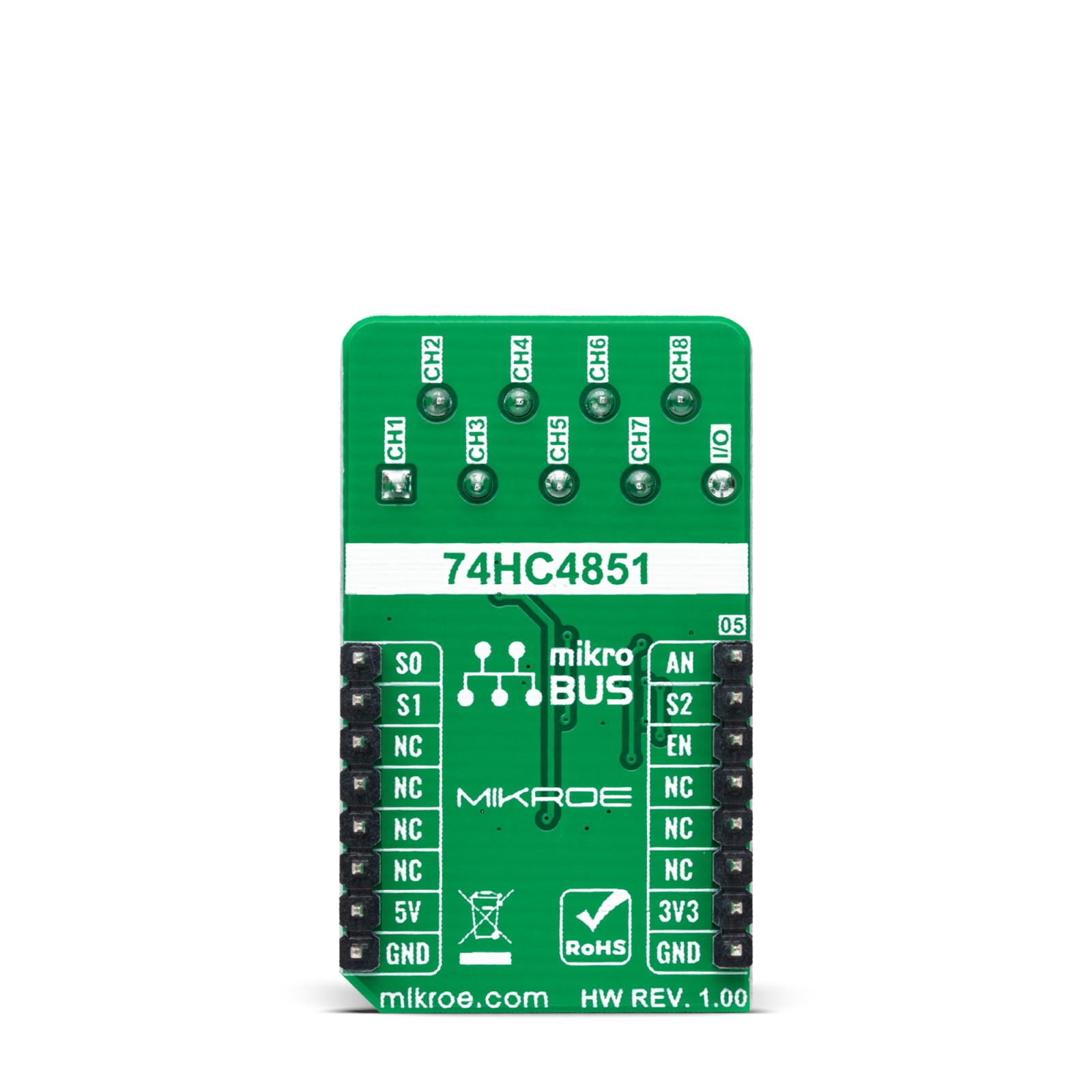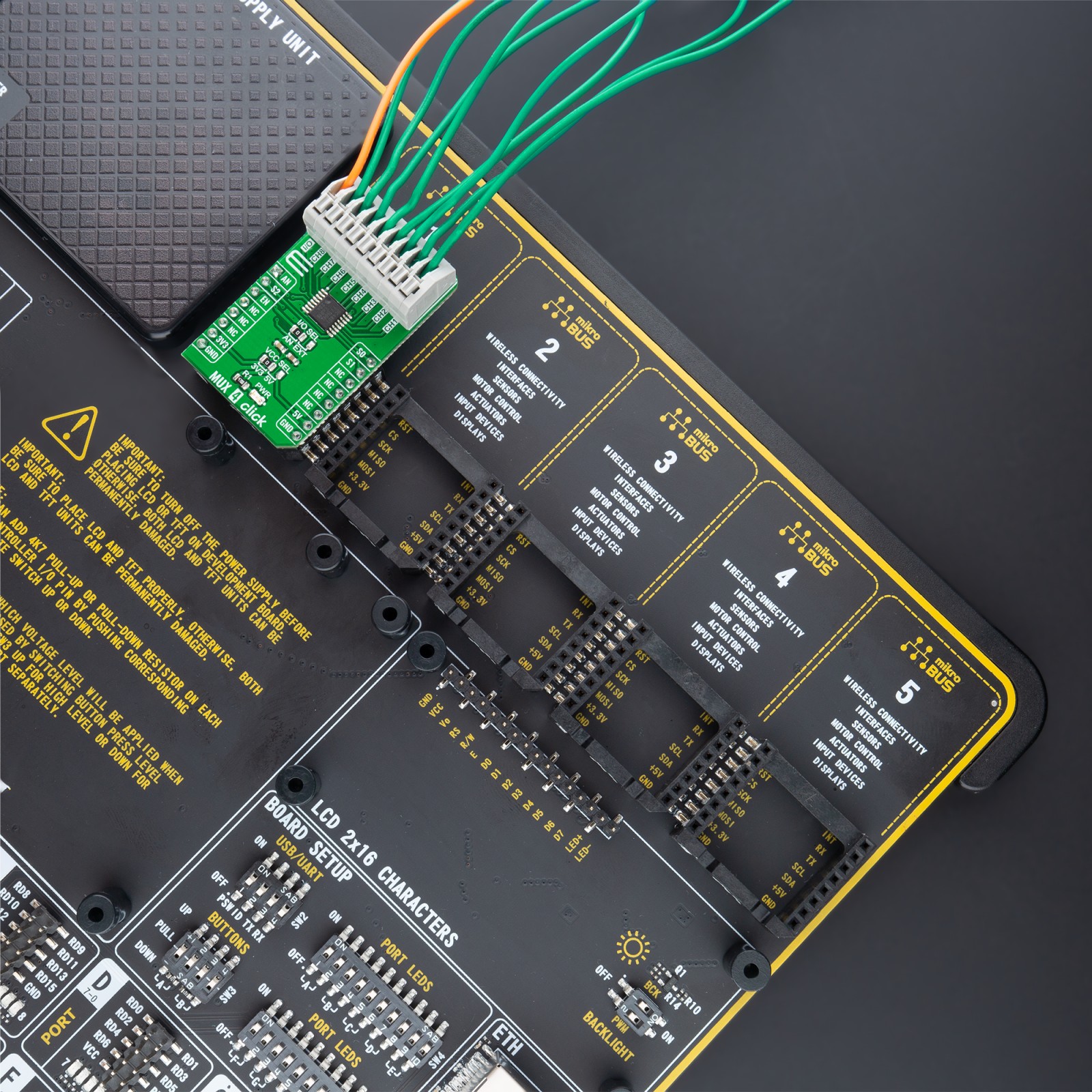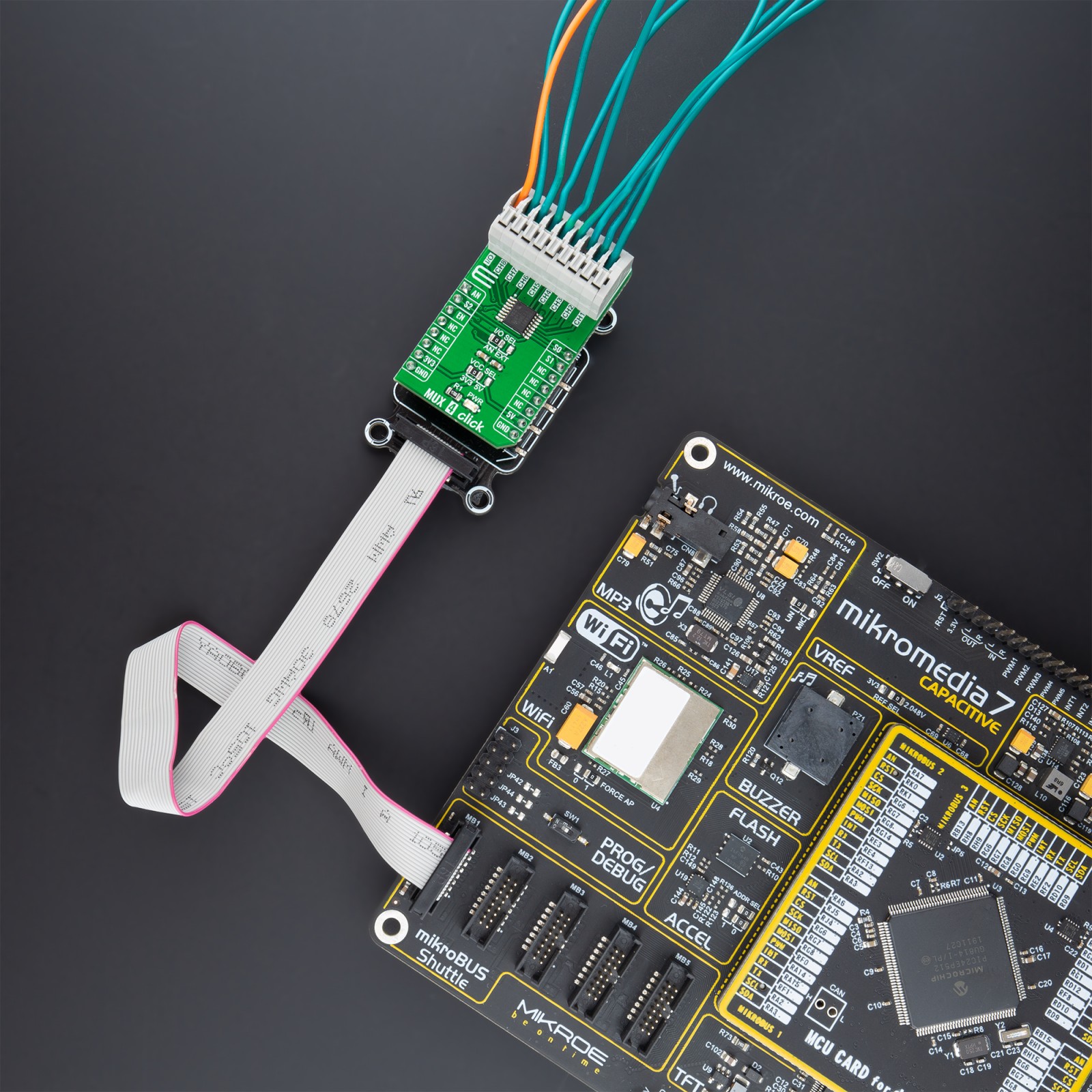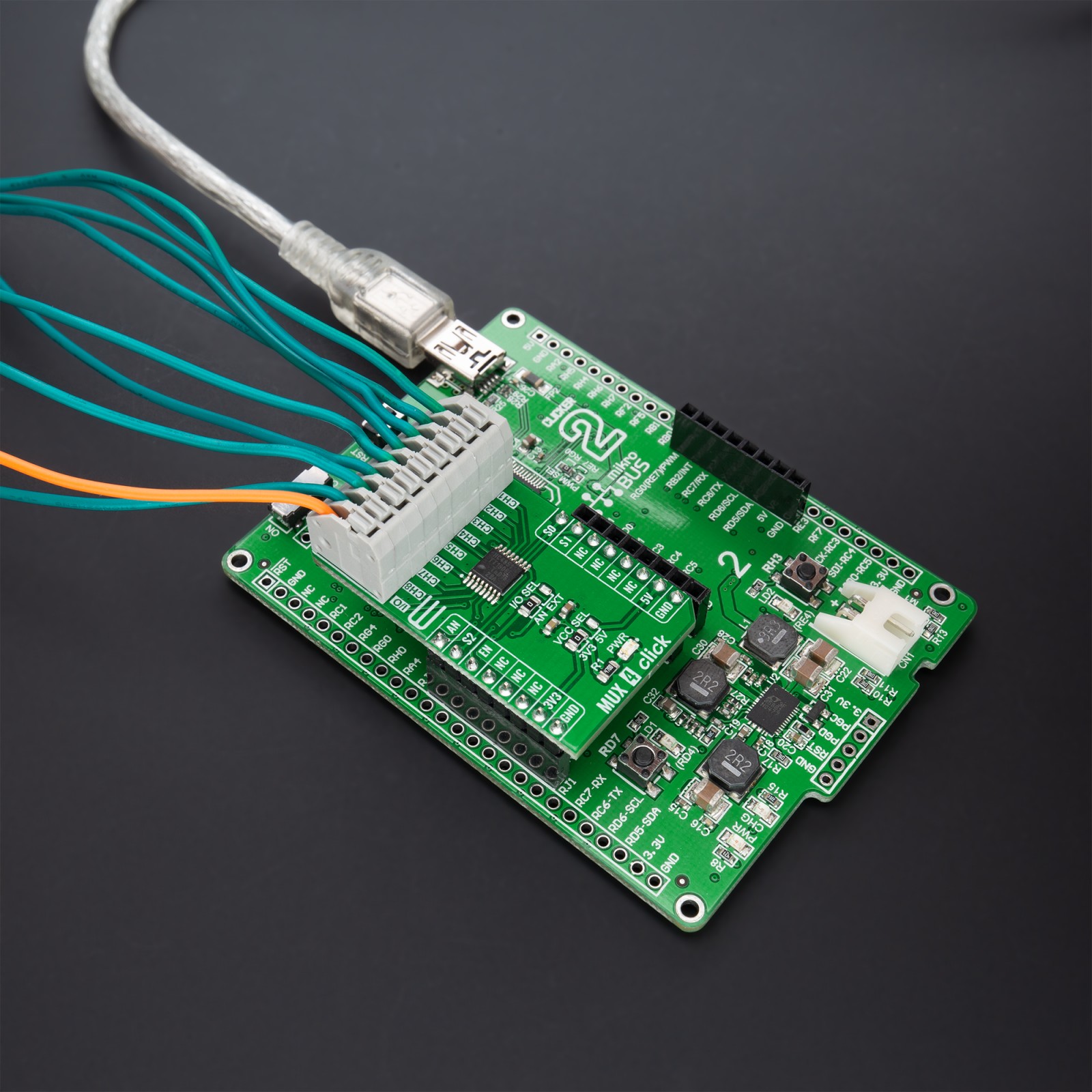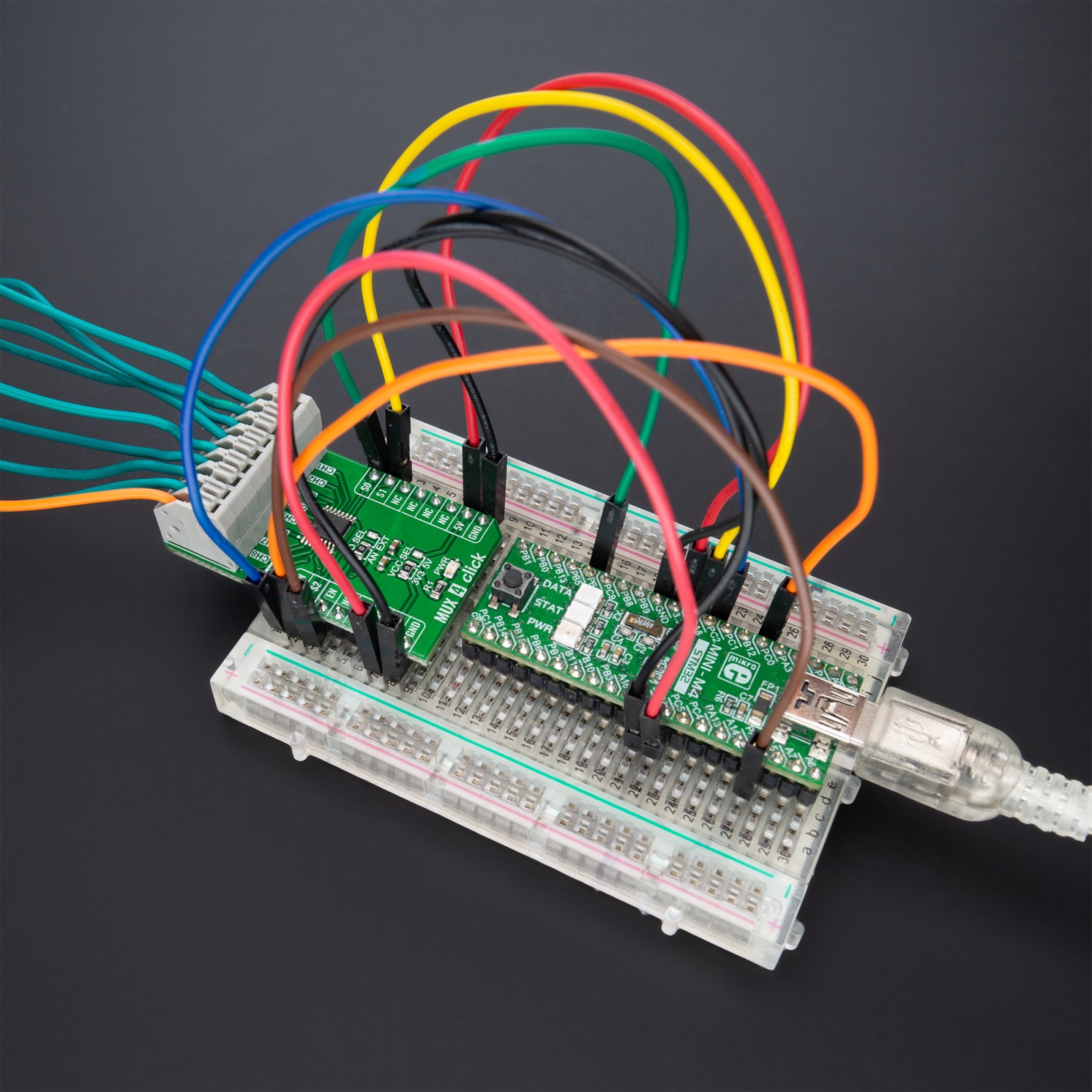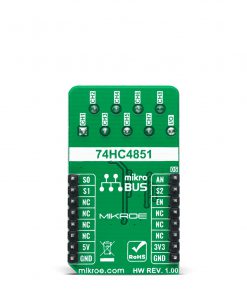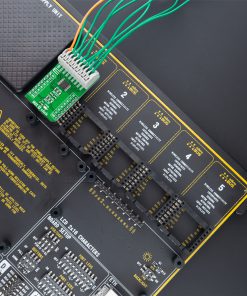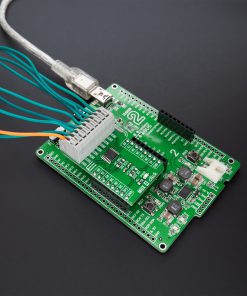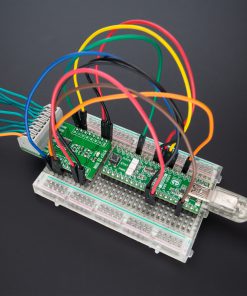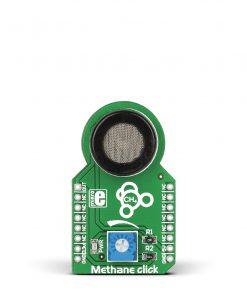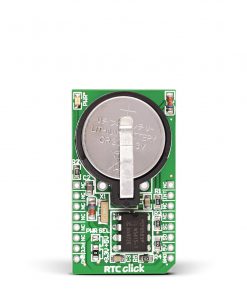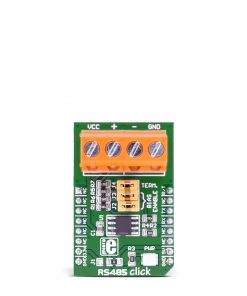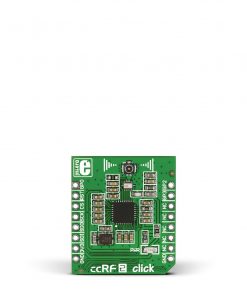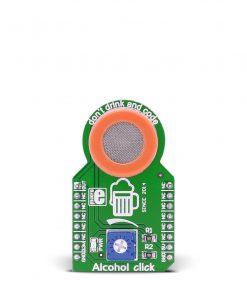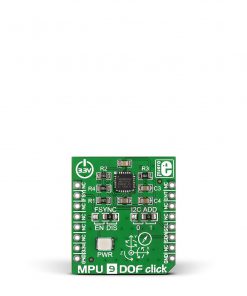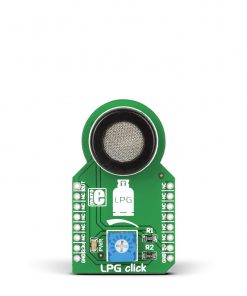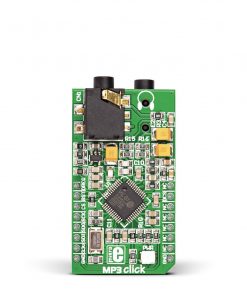MUX 4 Click
R145.00 ex. VAT
MUX 4 Click is a compact add-on board that contains a precise analog multiplexing IC. This board features the 74HC4851, 8-channel analog multiplexer/demultiplexer with injection-current effect control from Nexperia USA Inc. This Click board™ comes with three digital select inputs, active-LOW enable input, eight independent inputs/outputs, and a common input/output. It also features an injection-current effect control, which has excellent value in automotive applications where voltages above the supply voltage are common. This Click board™ is suitable for a wide range of analog or digital mux/demux applications, from industrial and instrumentation, consumer, communications, and automotive systems.
MUX 4 Click is supported by a mikroSDK compliant library, which includes functions that simplify software development. This Click board™ comes as a fully tested product, ready to be used on a system equipped with the mikroBUS™ socket.
Stock: Lead-time applicable.
| 5+ | R137.75 |
| 10+ | R130.50 |
| 15+ | R123.25 |
| 20+ | R118.61 |


